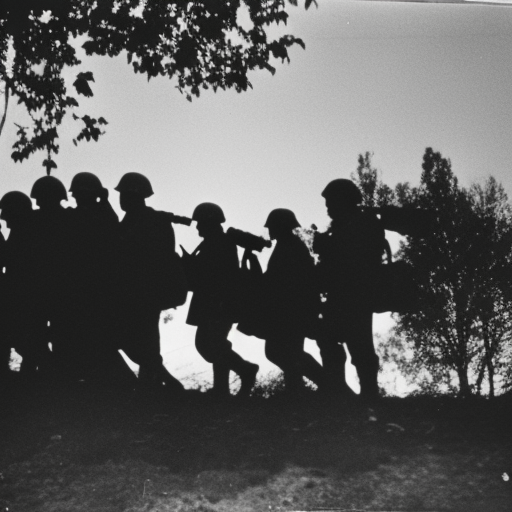Summary:
World War II in Yugoslavia was a complex and brutal conflict that lasted from 1941 to 1945. It involved multiple factions, including the Axis powers, the Yugoslav Partisans, and various ethnic and nationalist groups. The war resulted in significant loss of life and destruction, and had a lasting impact on the region.
The Invasion of Yugoslavia:
In April 1941, the Axis powers, led by Germany, launched a surprise invasion of Yugoslavia. The country was quickly overrun, and the government surrendered within two weeks. The invasion resulted in the disintegration of Yugoslavia, as different regions were occupied by different Axis powers. Croatia, under the leadership of the Ustaše regime, became a puppet state aligned with Germany.
The Resistance Movement:
Despite the initial defeat, resistance movements quickly emerged in Yugoslavia. The most significant of these was the Yugoslav Partisans, led by Josip Broz Tito. The Partisans were a communist-led guerrilla force that fought against both the Axis powers and the collaborationist regimes in Yugoslavia. They gained support from various ethnic and nationalist groups, and their ranks swelled over time.
The Chetniks:
Another resistance group in Yugoslavia was the Chetniks, led by Draža Mihailović. The Chetniks initially fought against the Axis powers but later focused more on combating the Partisans. They were primarily composed of Serbian nationalists and received support from the royalist Yugoslav government-in-exile.
Axis Occupation and Atrocities:
The Axis occupation of Yugoslavia was marked by widespread atrocities and brutal repression. The Ustaše regime in Croatia implemented a policy of ethnic cleansing, targeting Serbs, Jews, and Roma for extermination. Concentration camps, such as Jasenovac, were established, where tens of thousands of people were killed. The Axis forces also engaged in reprisals and counterinsurgency operations against the Partisans and other resistance groups.
The Battle of the Sutjeska:
One of the most significant battles of the war in Yugoslavia was the Battle of the Sutjeska in 1943. The Partisans, pursued by German and Italian forces, were trapped in the Sutjeska River valley. Despite being heavily outnumbered and facing intense bombardment, the Partisans managed to break through the encirclement and escape. The battle was a turning point for the Partisans and boosted their morale and reputation.
Allied Support:
The Partisans received significant support from the Allies, particularly from the Soviet Union and the United Kingdom. The Allies recognized the Partisans as the legitimate resistance movement in Yugoslavia and provided them with weapons, supplies, and training. Allied air support was crucial in weakening the Axis forces and aiding the Partisans’ operations.
The Liberation of Yugoslavia:
As the war progressed, the Partisans gained strength and launched offensives against the Axis occupiers. They liberated large parts of Yugoslavia, including Belgrade, the capital, in October 1944. The Chetniks, on the other hand, lost support due to their collaborationist tendencies and were marginalized.
Aftermath:
World War II in Yugoslavia resulted in significant loss of life and destruction. It is estimated that around 1.7 million people, including civilians and combatants, died during the conflict. The war also exacerbated ethnic tensions and led to long-lasting divisions in the region. After the war, Yugoslavia was reestablished as a socialist federation under Tito’s leadership, but the scars of the war remained. The legacy of World War II in Yugoslavia continues to shape the politics and society of the region to this day.












